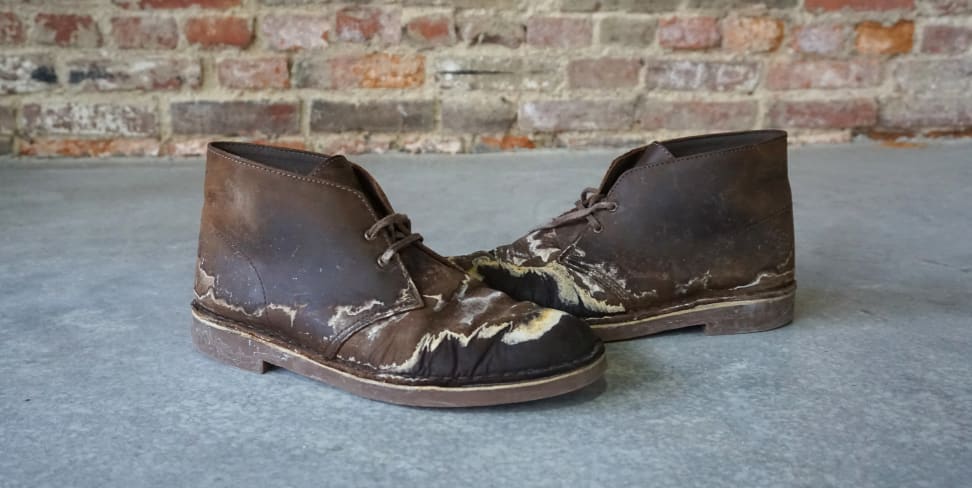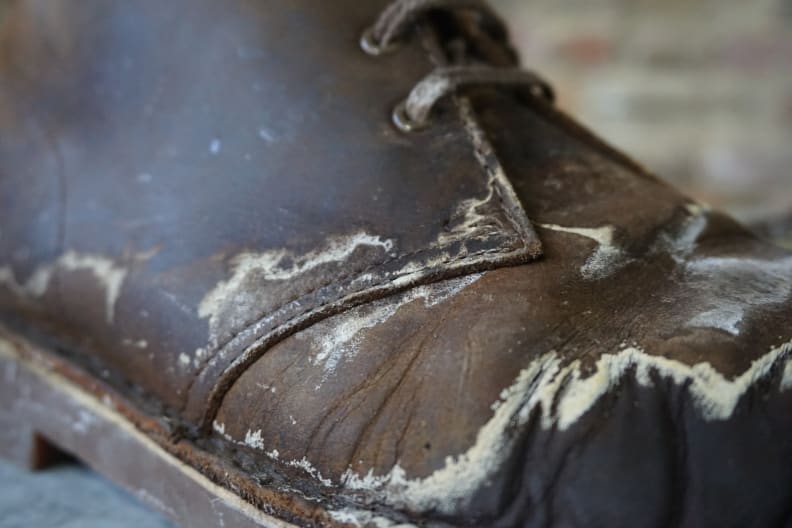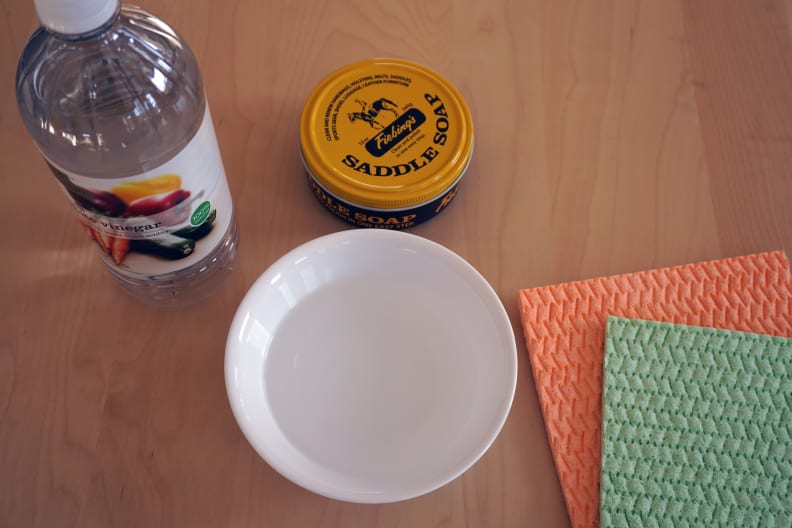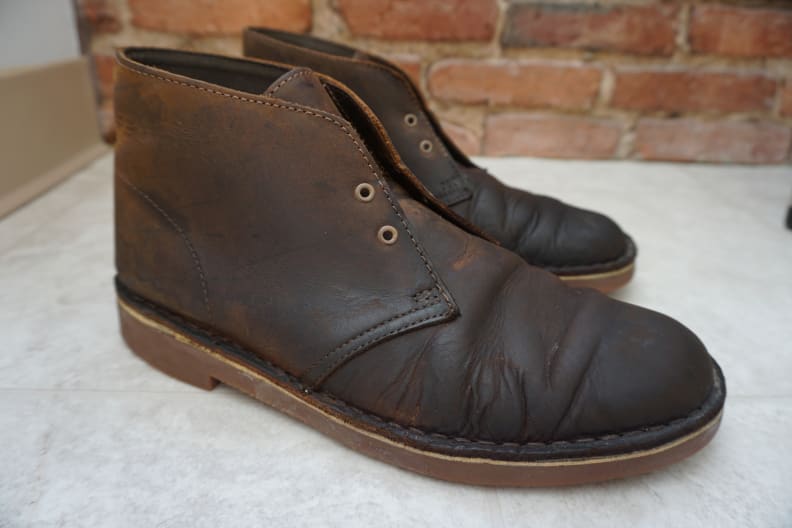How to Get Salt Stains Out of Your Shoes
Turns out, saltwater isn't the cure for everything.
 Credit:
Reviewed.com / Michael Desjardin
Credit:
Reviewed.com / Michael Desjardin
Products are chosen independently by our editors. Purchases made through our links may earn us a commission.
Winter isn't the most fashion-friendly of seasons, but in colder climates it does provide a great opportunity to bust out your boots. The downside? The winter months wreak havoc on said boots. Snow, both the powdery and especially the mushy, half-melted variety, can quickly deposit heaps of unsightly salt on your fancy new kicks.
This annual encrustation is one of the most irritating things about trying to look your best in the winter. Thankfully, there are steps you can take to buff that street sodium right out of your favorite leather or suede shoes. Best of all, it's not going to cost you very much.
Don't buy dedicated salt stain removers.
You've probably seen products like this in shoe shops and hardware stores, but don't be swindled into buying them. The truth is that you can achieve the same result for a fraction of the price, and chances are, you have everything you need in your house already.
Time is of the essence.
If your footwear has been ravaged by salt, don't wait to clean it off. Don't let it build up. The longer salt sits on the surface of your boots or shoes, the more likely it is to cause irreversible damage.

Don't let these stains sit for too long.
The idea of washing your footwear every night might seem more annoying than the salt stains themselves, but the process is quick and easy.
Look at it this way: Would you rather spend a few minutes ensuring that your hard-earned purchases last a while, or would you rather they fall victim to chemistry?
Plan of attack
First, gather the essentials. You might be surprised at just how easy this is:
• Water • Vinegar • A bowl • Cloths or sponges
This process will work with both leather and suede shoes. If you're cleaning leather footwear, there's also the option of finishing the process with a little bit of saddle soap. (More on that later.)

All of the fixins you'll need to clean your shoes: water, vinegar, cloths, and saddle soap (optional).
Here's the simple three-step process:
- Using a one-to-one ratio, combine water and vinegar in a bowl. You won't need much, so don't be too cavalier with the vinegar.
- Lightly dampen your cloth or sponge with the mixture and wipe down the trouble spots on your shoes. There's no need to soak them, so play it conservatively.
- Let them dry.
A word about drying
It's important that you resist the urge to dry your shoes with any form of heat, especially if they're made of leather. Sustained periods of intense, concentrated heat can destroy leather, causing it to crack.
Your best bet is to place your footwear on a couple sheets of newspaper and let them air-dry naturally. The process will take a while, but it's better than destroying your shoes. Just let them hang out overnight.
Saddle soap & oils
{{ amazon name="Fiebing's Yellow Saddle Soap, 12 Oz.", asin="B00GRSVTK4", align="right" }} There's debate in the leather community (yes, that's a thing) over the use of saddle soap on leather (there are other conditioners made specifically for suede shoes). Some feel that any soap, even in small quantities, can cause leather to dry out. Others maintain that, in moderation, saddle soap is essential.
My feeling is that, while it's not a mandatory step in the cleaning process, saddle soap is an excellent way to buff out some of the tougher stains on leather shoes. You should understand, however, that your shoes will be a slightly darker color after the conditioning process.
Remember, always use saddle soap in moderation. As with any cleaning or conditioning agent, the goal isn't to bludgeon the leather, but to gently bring it back to life. Start by applying a small amount of saddle soap to a damp cloth. Begin buffing the shoes in a circular pattern, working out any remaining salt lines or scratches.
After a good once-over, set the shoes aside to dry again.
What about mink oil?
Although mink oil is a popular choice for conditioning and waterproofing leather, I wouldn't recommend it for the average boot owner. It's far too viscous and heavy-duty for the type of delicate care we're talking about here. It can (and probably will) darken your leather more than saddle soap, and alter the material's character in the process.
That said, purists would argue that saddle soap, waterproofing agents, and other oils are just as damaging to leather's character. Your mileage may vary.
The fruit of your labor
Regardless of whether or not you choose to condition your shoes after the initial clean, the simple vinegar-and-water combination should provide ample relief from your day-to-day encounters with salty streets. With just a little work, you can look good all winter long.

After the initial clean, you'll want to let your shoes dry before any further cleaning or conditioning.
Related Video
{{brightcove '4093456147001'}}
